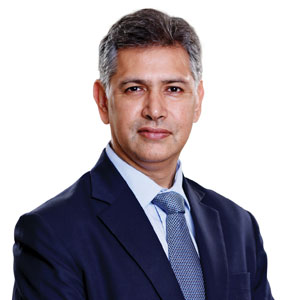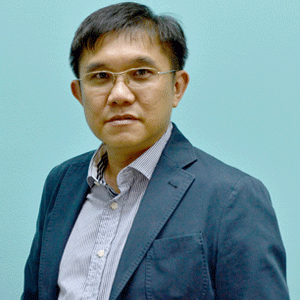THANK YOU FOR SUBSCRIBING

Ensuring Smooth Transition into a Digital World
Anand Menon, Chief Technical Officer – Eng Tech Energy Management ASEAN, Siemens


Anand Menon, Chief Technical Officer – Eng Tech Energy Management ASEAN, Siemens
Challenges along the evolution path
The main challenge in the energy system is to be able to provide reliable, secure and efficient power, with growing renewable content in the energy mix, at affordable price levels, with consumer acceptance for demand side management.
Transmission System Operators (TSO) now have to ensure system security in the context of variable in-feed and dynamic consumption along with capacity constraints and shorter market time intervals.
Meanwhile, Distribution System Operators (DSO) have to contend with prosumers and public opinion in a changing market scenario and dynamically varying generation profile.
Several utilities, world over, are in the process of laying focus on technologies that can increase network visibility and reaction times, improve situational awareness and forecasting, besides adaptive assets. The challenge lies in deciding when and how to embark on such technologies by managing investments carefully looking at the total cost of ownership (TCO) in order to derive the most economic benefits and improve operational efficiency.
Digitalization – Key driver of transformation
The three drivers spearheading the transition to an all-electric, agile energy world are de-carbonisation, de-centralisation and digitalisation.The value chain of digitalization with its data collectors, communication channels, software systems and data analytics applications aids the evolution from a traditional uni-directional chain to the bi-directional energy model The unfolding energy world enables new customer choices, more resilient networks with expanded services and improved integration.
Agile management of energy needs an open and standards-based end-to-end architecture from field level right up to the smart applications and services. Availability of necessary data in software platforms leads not only to executing applications intra-platform but also to a seamless integration of operational IT and enterprise IT. The amalgamation of OT and IT systems is essential to unlocking the potential value of smart solution deployment into the electric grids, besides enhancing decision-making as a result of analysis of granular, timely, operational data.
Technologies in focus
Substations, at both transmission and distribution levels are a prime source of information. While automation has long since been available at transmission substations, it had only penetrated the station level.
The three drivers spearheading the transition to an all-electric, agile energy world are de-carbonisation, de-centralisation and digitalisation
De-linking one IED to one measuring point opens the door to various possibilities which increases scalability and flexibility in function allocation. Moreover, the new measurement principles employed in the instrument transformers results in much greater flexibility from accuracy class and ratio perspectives. Adherence to IEC61850-9-2 and other related IEC standards also ensure inter-operability.
The above infrastructure also enhances the ability to transport large amounts of data beyond the station control room to a central “data lake” hosting open, scalable platforms such as MindSphere to perform big data analytics, correlating data from multiple sources, thus creating the basis for OT/IT integration.
At the distribution level, feeder automation helps in considerably reducing outage durations and revenue losses, improving the SAIDI and SAIFI reliability indices. The portfolio to cover vast geographical areas spanning across rural, suburban and urban networks would be a mix of solutions, ranging from high speed de-centralized, to semi-centralized ones at substation level and a centralized one at the control centre.

OT/IT integration – typical use cases
Outage Management is an ideal illustration where smart metering provides near real-time monitoring of outage status, allowing improved fault identification, especially on long radial lines in remote areas, as well as nested network faults in suburban and urban locations. The ability to enhance situational awareness with data that addresses fault identification and location, as well as information about crew availability and proximity to an event, helps to achieve considerable savings.
Distributed energy resources (DER) integration necessitates network reinforcement to increase capacity. A traditional approach with reduced visibility into prosumer systems, leading to estimations on the size and timing of DER exports to the grid, is expensive. Alternative cost-effective solutions would be to incorporate DER output data into network planning, and use the output data to achieve real-time network monitoring enabling the grid operator to take actions such as curtailment of DER output, with customer consent to optimize grid stability.
Outlook
The on-going energy revolution is changing energy trading mechanisms and several emerging technologies can make grid management smarter with edge computing and big data analytics.
The transition towards digital grids offers several opportunities for utilities as they ramp up renewable energy sources and unlock the potential of grid data. Sector couplings and energy storage are getting increasingly relevant with digitalization as the key enabler. Digital substation services and artificial intelligence using machine-learning algorithms are leading to improvements in maintenance practices and asset management.
Weekly Brief
I agree We use cookies on this website to enhance your user experience. By clicking any link on this page you are giving your consent for us to set cookies. More info
Read Also













